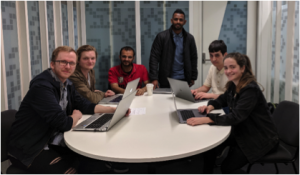Textbooks are still essential
Hard copy textbooks are still an essential learning tool in the hands of the pupils and school staff in developing nations, especially those in rural and remote areas. This is likely to be the case for the foreseeable future in spite of all the technological advances that are showcased at events such as USAID mEducation Symposium in Washington and the UNESCO Mobile Learning Week in Paris.
On July 12, 2013, Malala Yousafzai concluded her rousing United Nations speech with
“One child, one teacher, one pen and one book can change the world. Education is the only solution”.
Sadly, one book for every child is not the reality. In the five years since her appeal, books are still not reaching the pupils in sufficient numbers and one of the main reasons for this is inaccurate data from the schools themselves. Accurate data is an essential requirement for textbook provision planning and has been recommended in the Global Book Fund Feasibility Study supported by DFID, Norad, and USAID. (See Finding 2, page 20)
Since 2013, there has been the technical capability to collect textbook data. However, ministries, educational institutions, and multi and bi-lateral organisations have not seriously addressed the issue by taking advantage of this technical facility.

Now a team of undergraduate and post graduate students at Royal Melbourne Institute of Technology University (RMIT) have chosen a project proposal that encompasses data collection from all schools using a Returned Book Record (RBR). This data will be input onto a web-portal known as the Textbook Requirement Information Management System (TRIMS). The six students chose the project out of humanitarian concerns, choosing to use their knowledge for the development of a textbook delivery system. Their hope is that they will enable other students to take advantage of the educational opportunities they have enjoyed by improving literacy levels.
The RBR allows school principals or their staff to provide textbook information that gives the Ministry quick access to the requirements of the schools, the district, the province, and countrywide needs for the following school year.
The RBR can be completed in 3 ways:
- Hard Copy: for those schools without mobile or internet access, the RBR is provided by the District Education Office for completion by hand, it is then returned to the District under a stringent deadline for input onto TRIMS by the responsible District official.
- Retro Mobile Phone: for those schools with retro mobile phones and transmission signal, the RBR can be completed by hand for the school records and the data submitted to the District verbally for entry onto TRIMS by the District official.
- Smart or iphones: For those schools with internet access, the data from the RBR can be entered directly into the web-portal using their own access code or school ID. When data entry is complete it is the responsibility of the District Education office to check for errors or omissions, before providing access to the administration.
The TRIMS Web Portal will provide not just the textbook needs for the new school year, but also other information that will allow better planning and monitoring at every administrative level.
There are 5 critical questions for each school that will provide essential data concerning pricing, estimations, and weights/volumes for distribution:
- How many books have been provided from all sources? Not just from the Ministry but other donations.
- How many books are being returned? Some Provinces/Districts will need awareness campaigns to improve returns.
- How many books are in a reusable condition? Book quality can be monitored here, along with care awareness that the books need to be used multiple times.
- How many books are in stock? Counteracts hoarding and poor stock keeping.
- How many students are estimated to be in class for the new school year? Information often lacking in EMIS statistics as grade one new arrivals can only be estimated by the school staff.
The RMIT University team (as of April 2018) are halfway through their allotted 11 weeks assignment to develop a prototype. The RBR/TRIMS concept owner, Paul Gibbings, is optimistic that this is just the beginning of a serious development that can progress further.
The next step is to identify a country and an education ministry willing to trial the Returned Book Record system. This will allow any unresolved portal issues to be sorted out before the system can be more widely adopted.
The RBR/TRIMS team would welcome enquiries concerning this development. We are looking for further interest and support for the project in order to achieve the aim of “…one child…one book…” even in the remotest school.
For the RMIT project proposal and PowerPoint presentation please go to https://goo.gl/v3ieVy
 Paul Gibbings, Consultant
Paul Gibbings, Consultant
Textbook Publishing, Production and Distribution
Melbourne Australia
Tel: (61) 3 9343 6421 | Email: [email protected] | Skype: gibbings1 | LinkedIn: Paul Gibbings
The views expressed in this blog are the author's own.



